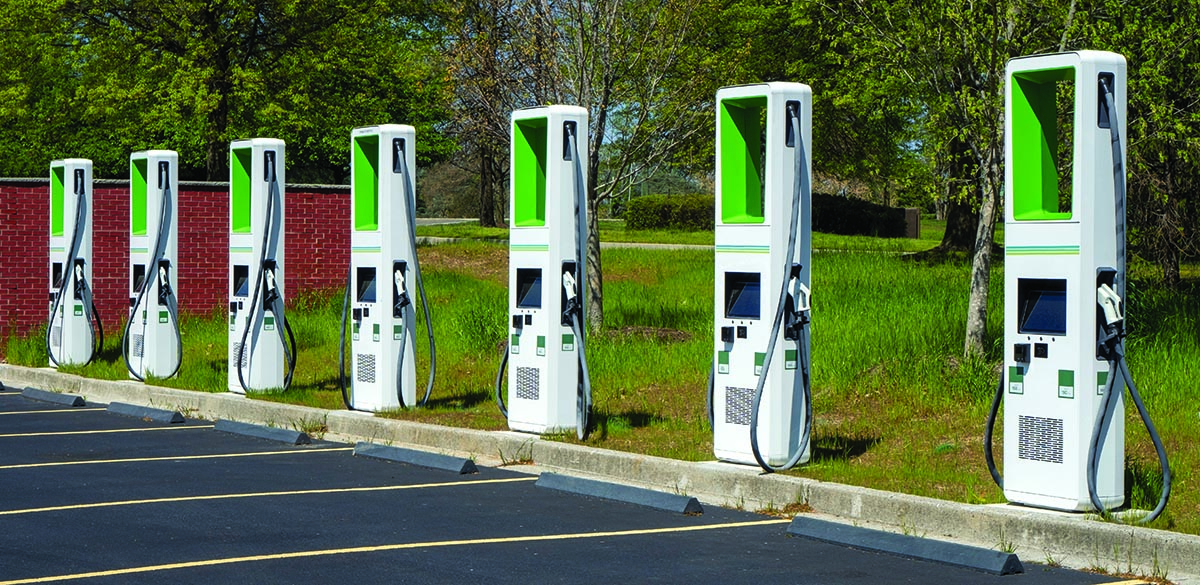01/03/2022
Demand for EV Charging Forecourts at all time high

With the clock ticking on the sale of new petrol and diesel vehicles, well-located sites for charging infrastructure across the UK can deliver increased value for landowners – as well as support Britain’s transition to a greener future.
By 2030, electric vehicles (EVs) will be commonplace in Britain. Nearly 7 million of these are expected to be on our roads by the end of the decade when the Government will phase out the sale of new petrol and diesel cars.
According to the Society of Motor Manufacturers and Traders, from 2019 to 2021 the number of EVs rose by nearly 400% while public charging points increased by just 70 percentage points. And while the UK lacks a nationwide EV charging infrastructure strategy – despite calls from the across the industry – many private companies and investors are seeking to take advantage of the growing disparity between supply and demand.
It is no surprise then that there is an ever-increasing appetite for EV charging stations across the UK. With interested buyers outnumbering identified suitable sites, the values that landowners can achieve are also seeing an uplift, despite operational and inflation challenges.
What makes a good location for an EV charging station?
The key requirements for EV charging stations (also known as EV charging forecourts) is land which is well-located to maximise on passing traffic. In practical terms, this means EV charging operators are most interested in sites which are situated next to or close to major trunk roads. This includes motorways, A and B roads but also busy local routes that benefit from a good daily traffic count. This is primarily because electric vehicle drivers want to be certain that they will be able recharge their cars in almost in the same way as with petrol filling stations.
After roadside visibility, next EV charging operators consider the wider catchment area of a site. Fast or ultra-rapid charging is an additional service that is offered to nearby residents, one that is rarely available at home or at retail locations. In addition, many EV charging forecourts are now also evolving into convenience retail hubs, delivering amenities that attract further footfall and increase the dwell time of customers. New offerings that EV charging stations bring to communities can include essential grocery, coffee and quick service restaurants, as well as postal, retail and other services.
In contrast to most other development uses, operators of EV charging stations are able to work with both greenfield and brownfield sites. This is because many companies can demonstrate the sustainability credentials of their offering to local authorities, that need a better infrastructure for future motoring.
For sites that also benefit from a good proximity to a nearby grid connection, EV charging station operators will also consider parcels of land with or without property, that may also have existing, lapsed or unsuccessful planning applications.
Finally, many prefer sites that measure a minimum of half an acre in urban, suburban and roadside locations as they seek to deliver well-designed and landscaped destinations for both EV and non EV drivers.
What parts of the country are most in need of EV charging forecourts?
In order to overcome the ‘range anxiety’ currently experienced by EV drivers, all regions across the country will need to grow their EV infrastructure. At present London and the South East benefit from the largest charging networks in the UK while regions such as the North East, Yorkshire and Humber and Wales have the lowest EV charging penetration. Recent estimates indicate that the UK will need 2.3 million charging points by 2030 in order to deliver a meaningful transition to green motoring.
Recent research from consumer title Which? showed three of the five most significant barriers to consumers buying an electric car relate to anxiety about charging. The Competition and Markets Authority has estimated that eight million drivers do not have the ability to charge at home. In order to unlock the move to electric cars, it is vital to improve the public charging network. Therefore, any land sites that are able to meet the above criteria will be considered by the operators.
What options are available to landowners that want to explore EV charging stations for their site?
A variety of strategies are available to landowners who are ready to work with an experienced and well connected property developer such as Godwin Developments. Some of these can deliver immediate one-off income from an unconditional land sales. However, this option will likely prevent the landowner from benefitting from the increase of their property value from development. For property holders that may be prepared to take the longer-term view via other options – such as conditional sale, option agreement or event joint ventures – the uplift in return can be substantial at the point of securing planning consent. Other solutions that can ensure the landowner retains title of their land but can still secure long term predictable income from it can also be explored with our land specialists.
For further details about Godwin Development’s EV Charging Forecourt land requirements visit our Sell Your Land page, call us on 0121 516 9508 or email [email protected].